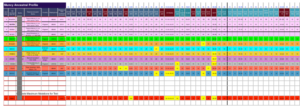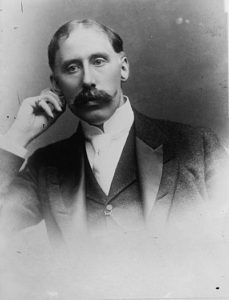Family Tree DNA (FTDNA) has a surname project, appropriately named “The Muncey Project.” This project was created on January 1, 2015 in order to determine the history and relationships of the various Muncy families in America and around the world.
This project is for anyone who descends from the Muncey, Muncy, Munsey, Munsy or similarly spelled lines, including people who have taken the FTDNA Family Finder test. We are also looking for males who carry the Muncey or derivative surnames to determine if they share share a common male ancestor through Y-chromosome testing and to find additional cousins and relationships through autosomal testing
This is currently a small group, but with time it will grow – and as it grows it will be even more informative and helpful. Joining the project is easy and there is no charge although you must purchase (or have purchased) a test from FTDNA to participate. You can jump to the join page by clicking “The Muncey Project at FTDNA” menu item in the left column of this page, or click this link and then click the “Join” button. If you have not yet tested with FTDNA, you will be given the opportunity to purchase a test at the same time you join the project. If you are logged into FTDNA, simply select the “Projects” drop down menu, select “Join a Project” and search for the “Muncey” in the Search by Surname box (note the spelling).
VERY IMPORTANT! Significant discounts on purchasing tests are given when you join the group so make sure you join the group BEFORE you test. If you purchase a test this week, and join the group next week, you don’t get the discount. JOIN FIRST!
ALL of the current testers are descendants of Francis Muncy (b. 1630s. d. 1674). We very much need testers who are descendants of William Muncy (b. 1640’s. d. 1698). Until we get a descendant of William Muncy to test, we are not able to compare the results to Francis Muncy to establish a relationship! If you are a descendant of William Muncy and considering testing, please contact me or leave a comment and I will contact you. (When you leave a comment, your email address is not published.)
Of our current members, one member of the project is descended from Thomas Muncey, born in Hertfordshire, England in 1710. This project member lives in Australia and his ancestors never settled in North America. Out of 111 markers tested, he has only three mutations from the profile of our Most Recent Common Ancestor (MRCA). Based on this information, this person is probably my 10th cousin (or closer).

Three members of the project show NO mutations of the 111 markers from the profile of our direct common ancestor. (I have a single mutation in 111 markers). The more Muncy males that test, the better we will be able to identify different lines and relationships. If you are a Muncy male, I urge you to take a FTDNA Y-Chromosome test–particularly the 67-marker test if possible, but the 37-marker test will also help.
I maintain a spreadsheet noting mutations and groupings and will provide any members of the Muncey Project with updates if they send me a request to be added to the list. Please use the “contact us” link to request the spreadsheet updates. (As an incentive to join the Muncey Project, only members of the project will receive the spreadsheet and updates.)
Steve Muncy

